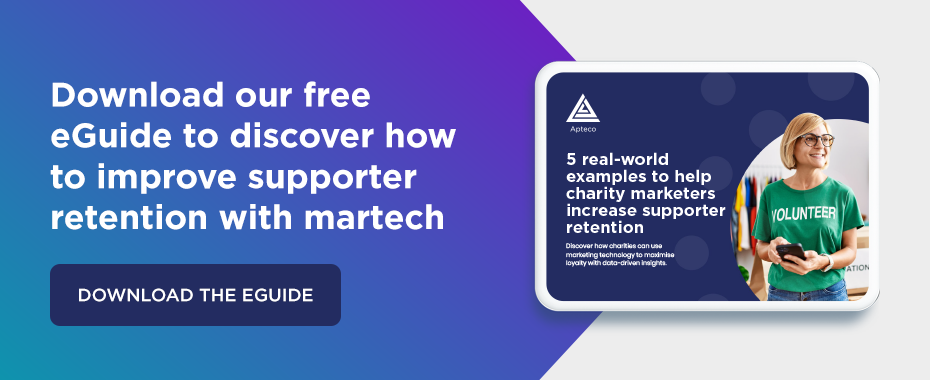Navigating charity marketing: finding the ideal path to success
02 Oct 2024 | by Olivia Parkes
4 min read
Just like with a business, charities must invest in their advertising and marketing to increase visibility and encourage new donors to support their cause. Unfortunately, charities often work with limited budgets, which means it can be a hard cost to justify. But, when done so effectively, even charities with smaller marketing budgets can ensure significant return on investment and get those donations and supporters rolling in.
Below, we’re going to take a look at all things charity advertising and marketing and the best course your organisation can take to maximise your efforts.
What is charity marketing and how does advertising fit in?
Charity marketing is the strategies and practises a non-profit organisation uses to promote themselves to attract new donations and raise awareness. It also aims to build trust and credibility to further the effectiveness of the work they undertake in their relevant sector.
Advertising fits into this by reaching a wider audience by paying for messages to be seen across various platforms, including TV, radio, print, and online ads. Advertising is just one of the strategies used as part of a charity’s overall marketing strategy.
Why is it so important for charities to have an advertising plan?
Advertising can be a lofty expense for a charity. But, it can also be incredibly effective and ensure the sustainability of a non-profit, especially when done efficiently.
However, thorough planning and consideration have to go into your advertising plan to ensure budgets are used wisely and have the best possible impact.
Here are seven reasons why it’s important for charities to have an advertising plan:
- Attracts new donations
- Increases visibility and awareness
- Helps build trust and reputation
- Helps recruit volunteers and staff
- Builds long-term relationships
- Allows you to reach specific target audiences
- Maximises marketing return on investment
What is the value of advertising for charities?
Advertising is incredibly valuable for charities and should play a key role in your overall marketing strategy. The average ROI for non-profit organisations is 300-400%, with the average cost per click of search ads sitting somewhere in the region of $3.72. This shows that, while costs can be high, so can the reward. And this is on top of the reasons we listed above about why it’s important to utilise advertising in your strategy.
How do charities track the value of their advertising?
To ensure charities are getting the most value out of their advertising strategy and drive more donations and volunteers, it’s vital that results are carefully monitored so continuous improvements can be made.
There are several steps to follow to effectively track the value of your charity’s advertising:
Step 1: Set clear and measurable objectives
Before you can measure anything you need to know what success looks like. Define the goals of your advertising strategy, that should align with the overall goals of your organisation. As a charity, many of these goals will likely come down to increasing donations.
Outline your key performance indicators (KPIs) so you can determine what good looks like and which areas need improvement.
Step 2: Implement time-saving analytical tools
With analytical tools, such as Apteco Orbit, you can streamline how you collate, sort and analyse data to produce actionable insights in next to no time. Data can come from every corner of your advertising strategy, whether you prefer to reach your customers on search ads, social media or somewhere in between.
Step 3: Track your conversions
One of the key ways you’ll track the value of your advertising is by tracking conversions, so you know which donors and donations can be credited to your advertising. Attribution models can also ensure these rules are in place to accurately track conversion paths.
Step 4: Consider A/B testing
A/B testing can help you determine which channels, platforms, messaging and overall strategies are the most effective for driving donations and conversions. Use the results of your A/B testing to further refine your advertising and determine what resonates with your target audience.
Step 5: Calculate the ROI
As well as working out the ROI of your advertising, you should also work out your cost per acquisition (CPA) to make sure you understand how much you spend every time you convert a new donor or volunteer. The lower you spend compared to the higher the value of return, the more successful your advertising is.
Step 6: Ask donors for feedback
Keep donors engaged by asking them for feedback on how they heard about your charity and what influenced them to donate. Ask what you could have done differently to convert them faster to see if there are any patterns.
Step 7: Monitor progress with reports
Regularly generate reports to analyse the performance of your advertising and compare this to the objectives and KPIs established at the start of the process. This allows you to make continuous improvements.
See how Apteco supports charities
Here at Apteco, we provide charities with the tools and opportunities they need to increase engagement with donors through streamlined personalisation and optimisation. Discover more about how Apteco benefits charities and take the step towards boosting donors and engagement today.


